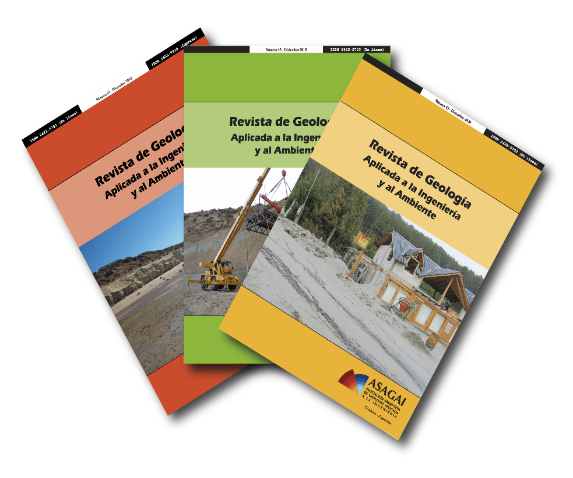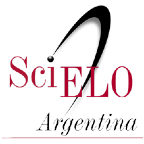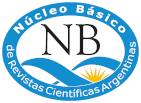Editorial Policies
Code of ethics and good practice
Privacy/Confidenciality statement
Copyright
Publication Decisions
Originality and Plagiarism
Conflict of interest
Fundamentals errors and normalization
Acceptance of preprints
Management of data quote
-----------------------------------------------
CODE OF ETHICS AND GOOD PRACTICE
The Journal of Geology Applied to Engineering and the Environment adheres to the international standards of Conduct and Good Practices published, originally established in 1998 and revised in 2011, by the Committee on Publication Ethics (COPE) - Code of Conduct and Best Practices Guidelines for Journal Editors and Code of Conduct for Journal Publishers. Available at https://publicationethics.org/resources/code-conduct.
In compliance with this code, the journal will ensure the scientific quality of the publications and the adequate response to the needs of readers and authors. The code is intended for all parties involved in the management and publication of scientific results, namely editorial teams, authors, and reviewers. The works that do not comply with these ethical standards will be discarded.
An editor at any time evaluates manuscripts for their intellectual content without regard to race, gender, sexual orientation, religious belief, ethnic origin, citizenship, or political philosophy of the authors.
PRIVACY/CONFINDENCIALITY STATEMENT
Any manuscript received for review will be treated as a confidential document; it is not shown or discussed with anyone, except those authorized by the Editor of the Journal of Geology Applied to Engineering and the Environment.
The names and email addresses entered in this magazine will be used exclusively for the purposes stated in it and will not be provided to third parties or for use for other purpose.
COPYRIGHT
The authors retain copyright and grant the journal the right to be the first publication of the work licensed under an attribution license https://creativecommons.org/licenses/by-nc-sa/4.0/deed.es
No part of the material published here may be reproduced, transmitted, stored, or used in any form or by any means, graphic, electronic, or mechanical, including, but not limited to, photocopying, recording, scanning, digitizing, tape recording, distribution on the Web, information networks, or storage and retrieval systems, without the prior permission of the Publisher.
The Journal allows authors to maintain the patrimonial right over their work without restrictions. The authors reserve the permission to publish and/or store the accepted version of their article in any type of repository or collection with the condition of explicitly and adequately citing, each time it is used, the original source of first publication (Journal of Geology Applied to Engineering and the Environment).
PUBLICATION DECISIONS
The Journal of Geology Applied to Engineering and the Environment does not charge for the processing of articles (APC), while encouraging and supporting the Diamond Open Access movement to academic scientific literature. Their editions have no charges for the authors or readers.
The Editor-in-Chief and Associate Editor(s) of the Geology Applied to Engineering and Environment Journal are responsible for decisions on the articles submitted to the journal for publication. To this end, they are guided by the policies of the Editorial Committee and assume the legal requirements regarding the safeguarding of the quality of the publication against complaints of "libel", copyright, and actions against plagiarism. The Editor-in-Chief and Associate Editor(s) may share their decisions with other editors or reviewers.
ORIGINALITY AND PLAGIARISM
Authors must ensure that the work presented is a completely original and unpublished manuscript, that it is neither published nor previously presented in any other medium, and if the authors have used the work and / or words of others, that they have been appropriately cited or bounded. Partially previously published material (for example, in Conference Proceedings) will only be accepted if the cause of such duplication is stated and the original source of the article is indicated in the new manuscript.
The signing authors of the work must be the same ones who have contributed to its conception, realization and development, as well as to the obtaining of the data, the interpretation of the results, its writing and revision. If you suspect that an article is substantially a copy of another work, please indicate it to the Editor-in-Chief of the Journal of Geology Applied to Engineering and the Environment, citing the corresponding previous work.
The Journal of Geology Applied to Engineering and the Environment will use the plagiarism detection system called Plagium (www.plagium.com) to verify short texts of up to 5000 characters quickly and freely. In addition, the manuscripts may be manually verified and contrasted with other publications if their originality is suspected. When a total or partial plagiarism or self-plagiarism is detected (without the corresponding citation), the text will not enter the editorial process and the author will be notified.
If you suspect that the results of an article are not true, discuss it with the Editor-in-Chief or Associate Editor of the Journal of Geology Applied to Engineering and the Environment.
CONFLICT OF INTERESTS
Refers to a formal policy in which a journal can require a conflict of interest statement or disclosure of a conflict of interest from a submitting or public author. According to the Committee on Publication Ethics (COPE): “Conflicts of interest arise when authors, reviewers, or editors have interests that are not fully apparent and that may influence their judgments about what is published. They have been described as those which, when revealed later, would make a reasonable reader feel cheated or cheated." It is understood that many academics, researchers, and practitioners may have potential conflicts of interest, which may or may appear to have an effect on their research. With regard to submissions, the signing authors of the work must be the same ones who have contributed to its conception, realization and development, as well as to obtaining the data, the interpretation of the results, its writing and review.
Based on the foregoing, the Journal of Geology Applied to Engineering and the Environment will require the authors a formal declaration of conflict of interest that allows a declaration to be included in the published paginated article (see Guidelines for authors). Articles will be evaluated fairly and will not necessarily be rejected when conflicting interests are declared.
On the other hand, any personal conflict of the author with any person who could act as an evaluator must be made explicit in the note to the Editor by disqualifying him/her as a reviewer and justifying it.
FUNDAMENTALS ERRORS AND NORMALIZATION
When an author discovers a significant error or inaccuracy in his own published work, it is his obligation to promptly notify the Editor and cooperate with him to retract or correct the article. Given the need to adequately standardize the names of the authors and affiliation institutions in order to provide a better visualization of their editorial production, it is suggested that the author maintain a standardization of his name and affiliation; this is adopting a unique name to sign your documents. Authors must take care to normalize their signature to allow the retrieval of documents in databases, facilitate the compilation of citations received and keep their visibility safe through the citation indexes.
- ORCID
Authors must have an Author Identifier Number (ORCID) to avoid confusion and errors in the writing of proper names. It can be generated free of charge on the website https://orcid.org/ and constitutes a persistent digital identifier.
Proper use of institutional affiliation will make data easier to find and your institution will have greater visibility, avoiding confusion with other similar name centers. It is worth mentioning that including the name of the workplace or institution translated into English, with the idea of ??facilitating international visibility, is a common practice. However, to avoid variants and unapproved names, it is recommended to do so only if the center has a previously standardized name accepted by the institution itself. Otherwise, it is strongly recommended to include the name of the workplace or institution in the original language. The editorial team recognizes the responsibility of encouraging authors to use their standard signature.
ACCEPTANCE OF PREPRINTS
The preprint constitutes a legitimate and universal variant as a possibility for the a priori publication of a scientific document. Its main advantage is the immediacy of scientific communication and the possibility that the content enters into debate in the scientific community. This possibility has changed the way articles are received and handled by journals. In this regard, the Journal of Geology Applied to Engineering and the Environment accepts submissions from reliable preprint versions. The use of preprint versions does NOT replace the fact that the author(s) must upload the manuscript, following the guidelines for authors, through the OJS system to start the editorial review process. The foregoing implies that a manuscript from a preprint version does not, by itself, guarantee acceptance for publication in the journal.
MANAGEMENT OF DATA QUOTE
The Journal of Geology Applied to Engineering and the Environment allows the authors who publish in the journal to deposit their works and the primary data that accompany said publications in national or international institutional repositories (as appropriate). In particular, national authors must take into account that, in accordance with Law No. 26,899 "Open Access Institutional Digital Repositories", in the event that their research results published in the article have been financed or co-financed with public funds, they are obliged to publish their works and primary data in their own or shared institutional repositories. It is also worth mentioning that, in accordance with the law, there may be exceptions to the obligation, such as, for example, in cases of confidentiality in which the data cannot be shared.
For data citation: citations to the data set should be included within the text when necessary, being linked to the corresponding entry in the reference list, as occurs in conventional academic writings. The minimum conventional elements that the reference must have are: the author, title, date of data deposit, repository, location (URL or persistent unique identifier), type of resource and version/edition.









